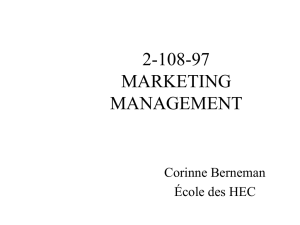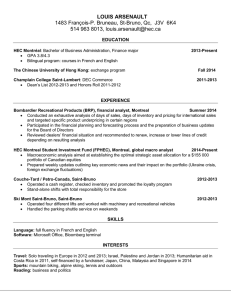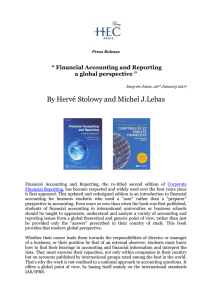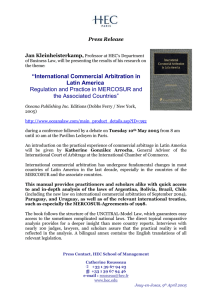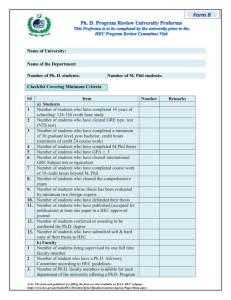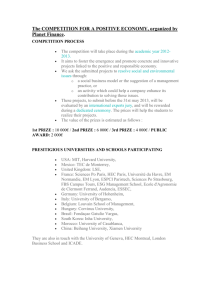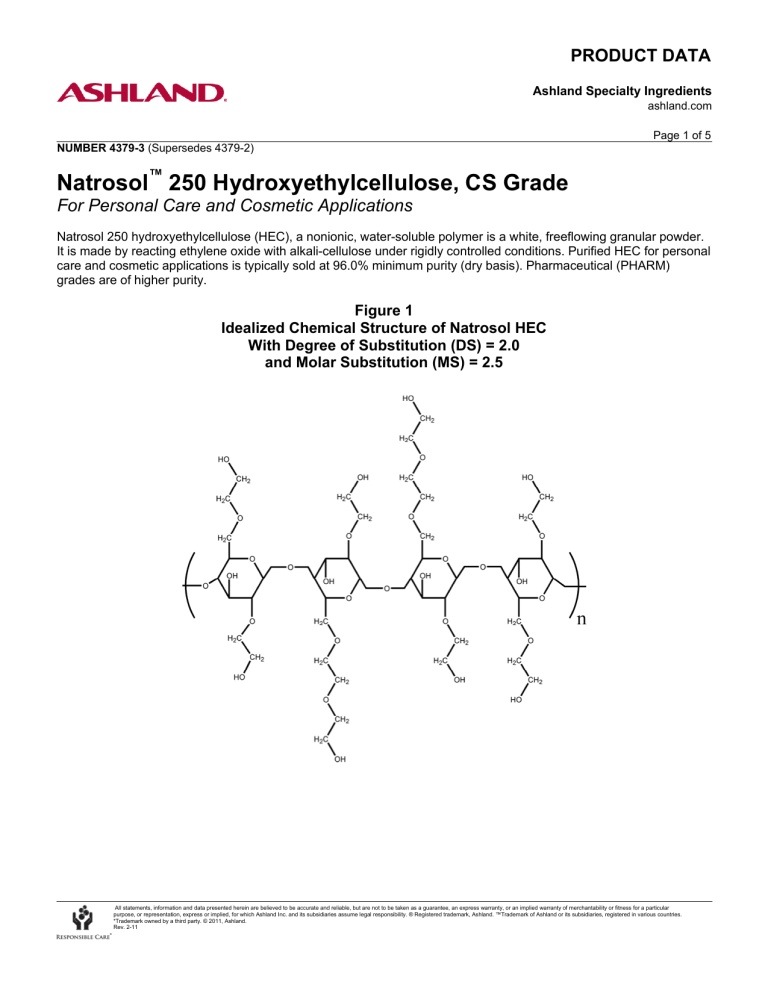
PRODUCT DATA Ashland Specialty Ingredients ashland.com Page 1 of 5 NUMBER 4379-3 (Supersedes 4379-2) Natrosol™ 250 Hydroxyethylcellulose, CS Grade For Personal Care and Cosmetic Applications Natrosol 250 hydroxyethylcellulose (HEC), a nonionic, water-soluble polymer is a white, freeflowing granular powder. It is made by reacting ethylene oxide with alkali-cellulose under rigidly controlled conditions. Purified HEC for personal care and cosmetic applications is typically sold at 96.0% minimum purity (dry basis). Pharmaceutical (PHARM) grades are of higher purity. Figure 1 Idealized Chemical Structure of Natrosol HEC With Degree of Substitution (DS) = 2.0 and Molar Substitution (MS) = 2.5 All statements, information and data presented herein are believed to be accurate and reliable, but are not to be taken as a guarantee, an express warranty, or an implied warranty of merchantability or fitness for a particular purpose, or representation, express or implied, for which Ashland Inc. and its subsidiaries assume legal responsibility. ® Registered trademark, Ashland. ™Trademark of Ashland or its subsidiaries, registered in various countries. *Trademark owned by a third party. © 2011, Ashland. Rev. 2-11 Page 2 of 5 Natrosol HEC is easily dissolved in cold or hot water to give crystal clear solutions of varying viscosities. Furthermore, low to medium MW types are fully soluble in glycerol and have good solubility in hydro-alcoholic systems containing up to 60% ethanol. Natrosol HEC is generally insoluble in organic solvents. Typical Applications in Personal Care Natrosol HEC is commonly used in a wide variety of applications in the personal care and medical industries. Some of the more common applications are as follows: • Hair conditioner • Liquid soaps • Shave gels and foams • Toothpaste (high salt) • Wipes (baby and adult) • Makeup/mascara • AP/Deodorant solids • Lubricant gels Solutions of Natrosol HEC are pseudoplastic or shear-thinning. As a result, personal care products formulated with Natrosol HEC dispense rich and thick from the container, but spread easily on hair and skin. Product Coding and Nomenclature Each specific grade of Natrosol HEC is designated by a product type, beginning with 250, which indicates an average molar substitution of 2.5 (5 ethylene oxide groups per 2 anhydroglucose units, as illustrated in Figure 1). This is followed by an indication of viscosity/molecular weight type and other designators. Example 1: Natrosol 250 MBR CS M B R CS Means medium MW Means biostable Means retarded hydration treated Means cosmetic grade Example 2: Natrosol 250 HHX PHARM HH Means ultra-high MW X Means fine grind particle size PHARM Means pharmaceutical grade Percent Solutions Type 1% HHR CS HHX PHARM 3,400-5,000 3,500-5,500 HR CS HX PHARM 1,500-2,500 1,500-2,500 H PHARM MBR CS MR CS 1,500-2,500 M PHARM G PHARM L PHARM 2% 5% 4,500-6,500 4,500-6,500 4,500-6,500 250-400 75-150 Page 3 of 5 Figure 2 Natrosol HEC Solution Viscosities B Grades Certain medium and high viscosity types of Natrosol HEC are available in a grade that has superior biostability in solution (designated by the letter “B” in the product type). These grades are manufactured under modified conditions to produce an HEC that is much more stable in water containing cellulase enzyme. Process water containing cellulase enzyme is common in tropical locations, but less common in developed northern regions (such as North America and Europe). The presence of cellulase enzyme in a formulation containing HEC will cause the formulation to lose viscosity over time. R Grades Cosmetic grades of Natrosol HEC are typically surface treated with a pH sensitive coating to prevent the tendency to lump, or agglomerate, upon introduction to water. Grades so treated are designated by the letter “R” for retarded hydration. Pharmaceutical grades of Natrosol HEC are not R treated and Aqualon does not recommend R treated types for use in applications involving longterm mucus membrane contact. Typical Properties of Natrosol 250 HEC Polymer Properties Purity, dry basis, %, minimum ........................................................................................................... 96.0 Moisture content (as packed), %, maximum ....................................................................................... 5.0 Browning range, °F (°C) ..............................................................................................401-410 (205-210) Softening range, °F (°C) ..............................................................................................275-284 (135-140) Bulk density, g/ml ................................................................................................................................ 0.6 Biological oxygen demand, ppm H Types..................................................................................................................................... 7,000 L Types ................................................................................................................................... 18,000 Page 4 of 5 Solutions pH, 2% solution ......................................................................................................................... 6.0 to 8.5 Surface tension, 0.1% solution, dynes/cm ........................................................................................ 66.8 Specific gravity, 2% solution ......................................................................................................... 1.0033 Refractive index, 2% solution .......................................................................................................... 1.336 Techniques for Dispersion and Dissolution Natrosol HEC grades that have been R-treated exhibit a hydration time–time that is required for thickening to begin after addition to water. Hydration time depends strongly on water temperature and pH (Figure 3). Cold, acidic water will provide the longest hydration delay. To prepare lump-free solutions, R-treated grades of Natrosol HEC should be added to agitated water at pH 7.0 or lower. After the Natrosol HEC particles are fully dispersed, the pH should be increased to pH 8.5 or higher. Figure 3 Effect of pH and Temperature on the Hydration Time of Natrosol R Grades Microbiological Info and Regulatory Status Aqualon facilities for hydroxyethylcellulose production are operated in compliance with Current Good Manufacturing Practice Regulations (CGMPR) as promulgated in the U.S. Code of Federal Regulations. While extreme care is exercised at every process step and the product is of excellent microbiological quality, HEC is not marketed as a sterile material; therefore, we recommend that our customers control the microbiological quality of their finished product through the application of appropriate process and formulation expertise. Page 5 of 5 Natrosol HEC is routinely sampled and subjected to microbiological testing by an independent laboratory and data are tabulated to provide an ongoing indicator of control in production. The data generated are not intended to be used to provide product specifications, but typical results obtained using our standard protocol, are shown below: Aerobic plate count, cfu/g ....................................................................................................................... <100 Mold, cfu/g .............................................................................................................................................. <100 Yeast, cfu/g ............................................................................................................................................. <100 Coliforms, MPN/g ...................................................................................................................................... <30 E. coli/10 g ......................................................................................................................................... negative Staphylococcus aureus/10 g.............................................................................................................. negative Salmonella/25 g ................................................................................................................................. negative Pseudomonas/10 g ............................................................................................................................ negative Aqualon utilizes official approved methods to determine the above microbial parameters, but recommends that users of Natrosol HEC assure themselves of compliance with any microbiological criterion by testing each lot. INCI Name: Hydroxyethylcellulose

